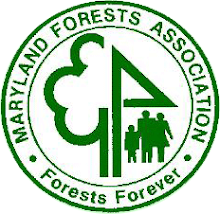By Michael T. Goergen Jr
GREEN building is booming in the United States. Architects, builders and owners strive to design and operate homes and office buildings that save energy, reduce pollution and protect our health.
The success of green building is partly because of the U.S. Green Building Council's Leadership in Energy and Environmental Design (LEED) standard, which certifies a building's green features and performance. You may have seen signs in lobbies or articles announcing that a building has received LEED certification because building owners are proud of the accomplishment, as they should be.
The LEED rating system encourages the use of responsible materials in construction and renovation, but as a forester, I'm frustrated to see continued ill-treatment of forest products — one of America's greatest natural resources.
Products from well-managed forests in Washington and the nation are a great green building choice, but the Building Council misses this point and has only made halfhearted attempts at necessary changes to their standard. The Building Council currently recognizes wood only if it is certified to the Forest Stewardship Council's forest standard.
The Stewardship Council's standard is respectable, but the Building Council excludes other U.S. systems like the American Tree Farm System and Sustainable Forestry Initiative. I've seen what these standards do on the ground. They promote responsible forestry.
A Forest Stewardship Council-only stance is not based on science, and severely limits the amount of U.S. wood that can be used in LEED projects. That is not good for green building, our environment or states like Washington that are rich in forestland.
The only solicited comments the Building Council seems to be heeding are coming from groups bent on promoting a monopoly and others in the building sector who have very little, if anything, to do with forest products. I don't understand why they ignore American foresters, who live and breathe forestry and go to school for years to understand how best to preserve and maintain one of our most precious natural resources.
There are important economic reasons for LEED to open the standard. Forest Stewardship Council-certified lumber is not as prevalent in the U.S. as it is overseas. The American Tree Farm System and the Sustainable Forestry Initiative are standards designed with American forests in mind.
Green builders trying to gain LEED certification may be forced to buy from the limited amount of Forest Stewardship Council-certified forest products here or make their purchases from Stewardship Council sources located overseas, which are often certified to lower standards.
With our nation suffering from a recession and high unemployment, the last thing we want to do is hurt Americans who make their livelihood from our forests. Opening LEED to the other standards will be good for our economy.
Expanding demand for forest products certified to other standards will also benefit forests. As green building grows, demand for forest products from certified forests will also increase. That will provide an incentive to owners of forestlands to get certified, bringing even more acres under broader environmental requirements.
The choice is clear: For the benefit of green building, our forests and the U.S. economy, the Building Council needs to see the forest for the trees, look at the science, and open up its standard now.
Michael T. Goergen Jr. is executive vice-president and CEO of the Society of American Foresters. He also chairs the Sustainable Forestry Initiative's External Review Panel, an independent group of 15 distinguished volunteer experts representing conservation, environmental, forestry, academic and public/government organizations.




No comments:
Post a Comment